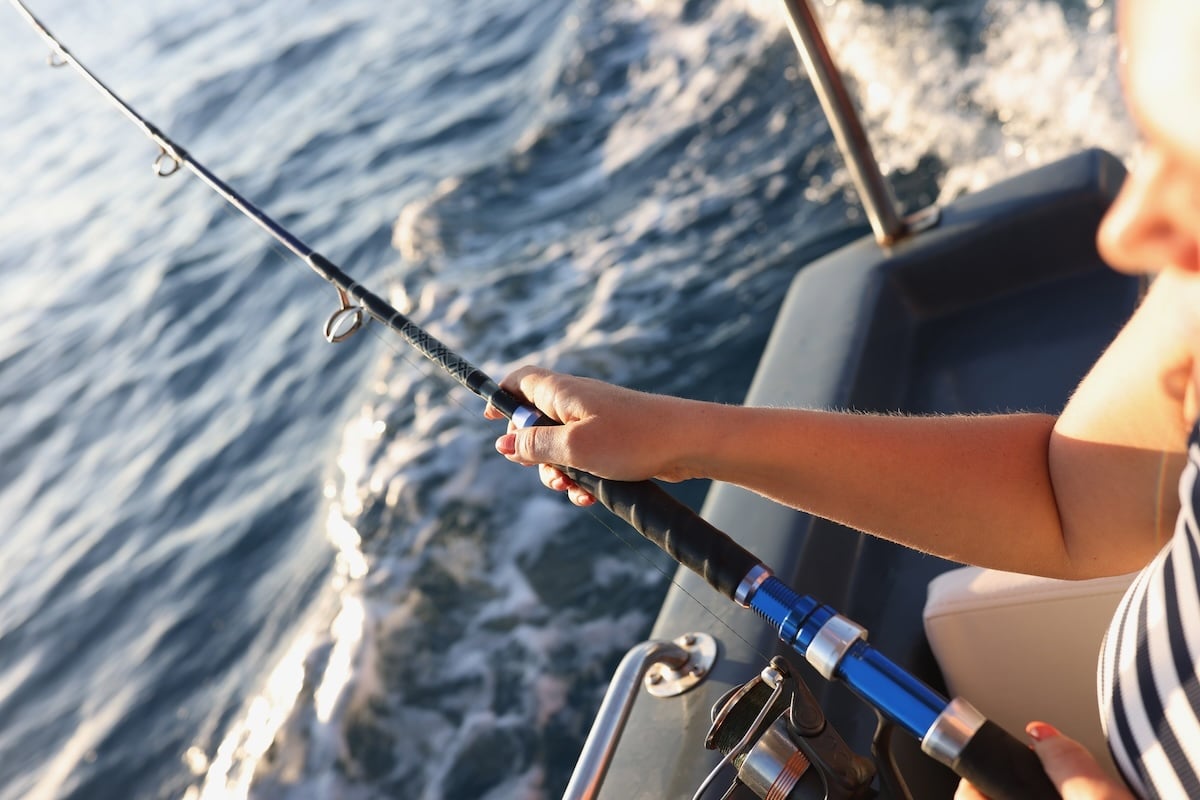Most fishing guides get into the business for the fishing—the freedom, the water, the chance to build something of their own. Not to chase down payments, answer texts at midnight, or flip between your phone, a notebook, and a half-updated calendar app just to make sure you’re free next Saturday. But for most guides, especially the ones flying solo or running small charter operations, the admin side of things has a way of taking over.
It starts simple: a text here, a deposit there... a spreadsheet (or a notepad) to keep it all straight. But as you grow your fishing business and your name gets around, the chaos creeps in. You start losing time to back-and-forth texts, forgetting who still owes a deposit, and realizing too late that you double-booked the same afternoon.
It’s not that you’re doing anything wrong—it’s just that the systems that worked fine when things were slower can start to fall apart once business picks up.
This guide is here to help you understand how smoother operations can make for better business and happier clients. Let’s start with the biggest time sink of all: the old-school booking grind.
Section 1: The Hidden Time Sink of Manual Booking

Booking trips by hand might feel like the most natural thing in the world, especially if you’ve always done it that way. You text with clients, maybe take calls while fueling up the boat, and jot things down in your phone’s calendar or a notepad in the truck.
It’s personal, it’s familiar, and it gets the job done… until it doesn’t.
Here’s where things usually start to break down:
- A client confirms by text, but you forgot to block the date on your calendar
- Two parties show up on the same morning for the same trip
- A phone call you meant to follow up on slips your mind during a busy week
- You write down the wrong date, and nobody realizes until it’s too late
These type of things happen when you're juggling too much. It’s easy for things to slip when you’ve got a full season, texts rolling in, and maybe even a few online PPC ads running to drum up business.
The more fishing trips you book, the harder it gets to keep all the moving parts in your head. And when something slips through the cracks, it’s not just a missed trip—it’s a hit to your reputation.
Even when everything does go smoothly, the time it takes to manually schedule, reschedule, confirm, and follow up adds up fast. Booking one trip might take 5 or 6 separate exchanges, especially if the client is new or has a lot of questions. Do that a few dozen times a month, and you’re spending hours every week tapping away at your phone doing administrative tasks instead of prepping your boat or watching the tide.
And that’s assuming nothing changes. Rescheduling due to weather? Changing the headcount? Trying to coordinate with another guide or a second boat?
Every added variable is another layer of friction, and another chance to lose a booking—or burn out from trying to keep up.
That’s why many fishing guides reach a point where they ask themselves: "Is there an easier way to do this?" The answer is yes: Tighten the system so you can run your business like a pro, without losing the personal touch that keeps clients coming back.
Section 2: The Cost of Chasing Deposits (and What to Do Instead)

It’s one of the most frustrating parts of running a charter: you talk with a client, they sound excited, you block off the date, and then—nothing. No payment. No response. No-show on trip day.
Every guide has dealt with it. Some just eat the cost. Others try to play hardball after the fact. But the most experienced captains? They build a process that filters out the maybes and secures the yesses right from the jump.
The truth is, collecting a deposit isn’t about being pushy—it’s about protecting your time. When a client puts money down, they’ve made a commitment. They’re far less likely to ghost you, back out last minute, or try to haggle at the dock. And for you, that means fewer wasted mornings and a lot more predictability.
But what’s the "right" way to do it?
There’s no answer that will fit every business, but here are a few common business strategies that experienced fishing guides use:
- Flat-rate deposits for all trips—easy to explain and enforce
- Percentage-based deposits (like 25% or 50%) to keep things fair across trip types
- Flexible payment timelines—for example, deposit at booking, balance day-of
- Cancellation policies that are clearly laid out and acknowledged ahead of time
What matters most isn’t the amount—it’s the clarity. When clients know exactly what to expect and how to pay, things run smoother. You avoid awkward payment conversations and give yourself a cushion in case someone backs out.
It’s still possible to take cash or card in person. But if you’re relying 100% on dockside payments, you’re carrying all the risk—and all the stress—until the last minute. It only takes one no-show on a busy weekend to realize how costly that can be.
Section 3: Liability Waivers
Let’s talk about waivers—something too many guides overlook until it’s too late.
You don’t need to be running a whitewater rafting trip or offshore overnight to justify a waiver. Even a calm half-day on the flats carries risk: someone trips on the dock, cuts themselves on a hook, or has an allergic reaction to bait. If something goes sideways, a signed waiver could be the only thing between you and a serious legal headache.
But here’s where many guides stumble: they either forget to bring waivers, hand them out the morning of the trip when everyone’s rushing, or never bother at all because it feels like a hassle. And that’s understandable. Paperwork isn’t exactly "part of the dream" when you’re trying to run a tight, professional charter fishing business.
The better option? Make waivers part of the booking process.
When clients sign their waiver online at the time of reservation, it’s:
- Done ahead of time—so you’re not scrambling at the boat ramp
- Stored digitally—no risk of losing it in the truck or having it blow away
- Legally timestamped and accessible from your phone or any device
This isn’t about being paranoid. It’s about running a legit operation. Guides who handle waivers professionally send a clear message: I take this seriously. I run a real business. You’re in good hands.
Plus, clients appreciate it. It makes everything feel more organized and more official. You don’t have to print anything, carry a clipboard, or hope everyone remembers to sign before push-off.
A smart waiver system isn’t just about covering your bases—it’s about building trust before your client ever sets foot on the boat.
Section 4: The Booking Experience Matters More Than You Think

It’s easy to think that most clients reserve fishing trips the same way they always have—word of mouth, a quick phone call, maybe a Facebook message. And sure, that still happens. But the average customer today is booking from their phone, while planning a vacation or scrolling during lunch, and they’re comparing their options based on how smooth the process feels—not just how good the fishing might be.
That means your reservation experience isn’t just admin—it’s your first impression.
Here’s what frustrates potential clients:
- Confusing instructions or outdated websites
- Delayed replies or unclear availability
- Payment steps that involve multiple platforms or apps
- No confirmation, no reminders, no peace of mind
Even if you’re the most experienced guide in the area, a clunky booking flow can cost you trips before you ever get a chance to show what you’re about. Customers don’t want to jump through hoops or wonder if they’re locked in. They want clear, fast, mobile-friendly steps that feel secure and reliable.
A better booking experience usually includes:
- A mobile-optimized page or portal where they can view trips and pricing
- Real-time availability so they can pick a date without waiting
- An easy way to pay and sign a waiver, all in one go
- Instant confirmation and automatic reminders
This isn’t about turning your business into an app or going full tech-head. It’s about removing friction. When reserving a trip feels smooth and professional, it builds trust—and trust gets people excited to fish with you.
A better experience doesn’t just help new clients. Repeat customers love it too. They don’t want to re-send the same questions or wonder if the process has changed. When booking is easy and reliable, clients are more likely to keep coming back.
Section 5: Scaling Without Hiring? It’s Possible
Not every guide wants to grow into a big operation. Maybe you love running things solo. Maybe you’ve got one or two boats and you like it that way. But even small-scale guides hit a ceiling if their time is spent micromanaging logistics.
What if you could run more trips, keep the personal touch, and still have your evenings free?
That’s the sweet spot a lot of experienced captains are aiming for now: working smarter, not harder.
Here’s what that looks like:
- Internet bookings that manage themselves. It's one thing to accept online reservations for fishing charters. It's better if the calendar updates automatically when a client books online.
- Deposit policies that enforce themselves. No more “just Venmo me” and hoping they follow through.
- Waivers that store themselves. You’re covered, and you don’t need a folder full of paper.
- Confirmations that send themselves. Clients stay informed without you having to message them individually.
All of this adds up to less stress, more trips, and a better experience for everyone involved—without needing to hire a receptionist or spend your nights copying details into a spreadsheet.
Scaling as a solo guide doesn’t mean adding people. It means removing roadblocks so you can focus on what you do best: getting people on the water and giving them a great day.
Section 6: What a Good Online Booking System Looks Like

If you’ve been doing things the same way for years, it can be hard to picture what a streamlined booking system for fishing guides looks like. But you don’t need to imagine some corporate overhaul or a bunch of software tools stacked on top of each other. (Honestly, most guides don’t want a bunch of tech stacked on top of their day.)
A good setup is simple, tight, and built around what guides actually need: The things that keep the business running smooth day-to-day, even when things get busy.
At its core, a great online booking platform for fishing guides will cover the following areas:
1. Scheduling That Updates in Real Time
You or your clients book a trip—it’s locked in. The calendar updates instantly, and nothing gets double-booked. Bonus points if it automatically reserves gear or assigns boats when needed.
2. Upfront Deposits With Flexible Rules
You set the terms: fixed amount, percentage, or full payment. It’s easy for the client to pay and automatic for you to track. No more waiting at the dock with crossed fingers.
3. Digital Waivers That Are Easy to Sign and Store
Clients sign as part of the reservation process. You can pull up the waiver from your phone if needed. It’s simple, legal, and always accessible.
4. Automated Confirmations and Reminders
Clients receive email or text confirmations the second they book. Follow-up reminders can go out the day before. That means fewer “what time again?” texts and fewer no-shows.
5. Mobile-Friendly for You and Them
Whether it’s the client booking from their phone or you managing your schedule in the truck, everything should work smoothly on mobile.
These five elements don’t just make your business easier to run. They also make you look more professional. And in a competitive world where people are comparing their options online before they ever make a call, that can make a real difference. These days, most first impressions of your business will happen online rather than on the phone, and it can be the difference between getting the trip or losing it to someone else.
Start Small, Get Organized, Fish More

You don’t need to reinvent your business overnight. Most guides who upgrade to a better booking and management system start by fixing just one thing—maybe it’s the waiver process, or just taking deposits online instead of by hand.
The important part is this: your time matters. Your reputation matters. And the more organized your system, the more control you have over your calendar, your income, and your time off.
Running a charter operation doesn’t have to mean running yourself into the ground. Whether you’re grinding weekday trips inshore or booking out weekends offshore, one thing’s always true: smoother operations mean better fishing—and better business.
%20(1).png?width=349&height=75&name=DSman%20logo%20blue%20dark%201200%20(1)%20(1).png)

